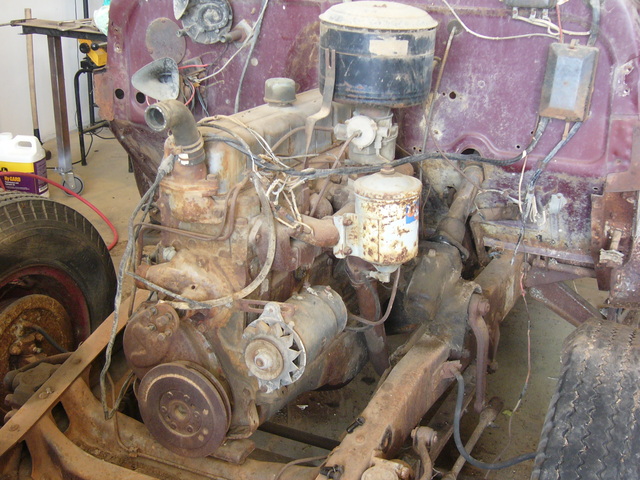If you’re afflicted with the urge to restore old vehicles and machines—as I am—you’ve likely checked out more than a few rusty hulks hiding behind rows of trees or farmyards. When deciding whether or not its worth the trouble of dragging a machine home for a restoration, there are a couple of musts to consider.
First, the vehicle, whatever it is, must be pretty complete. Hunting down rare parts like chrome trim pieces can take a lot of time and money. Second, the engine must show some indication it’s at least rebuildable, unless you’re planning to build a hot rod or replace the existing powerplant with something completely different anyway.
Read Also
Movin’ On
Me, a little dusty after a long day of equipment field testing in Texas Aside from…
The first thing I tend to do when looking under the hood of a potential project is grab the fan, give it a turn and see if I can get the crankshaft to rotate a little. If it does, there is a much better likelihood that the engine can be brought back to life. If it’s badly seized, then it could just be nothing more than a lump of scrap iron.
A couple of years ago I had an International W-6 tractor in my shop with a seized engine. I tried the usual method of getting a stuck engine to turn, pulling the spark plugs and spraying liberal amounts of penetrating oil into the cylinders. Then after a few days, I put a breaker bar on the crankshaft pulley bolt and leaned into it. But the old W-6 wouldn’t cooperate.
Finally, I took the head off to find two of the cylinders full of dirt and sand. Debris had blown in through the two open valves during the years it sat neglected. After scooping all the crap out, I soaked the cylinders for weeks with more penetrating fluid, but it was hopeless. The engine was unusable.
Any time I mentioned that stuck engine, it seemed everyone I spoke to had their own perfect recipe for a solution almost guaranteed to loosen things up. People recommended I use everything from straight diesel fuel to a mix of Coca-Cola and aviation gas!
There are also commercial fluids out there being marketed for just such a job. And this week a press release appeared in my email representing just such a product. The company claimed their fluid was the answer to most seized engine troubles. The message was from B.R.T. Tech Corp in Dorval, Quebec, and its product is called Engine Release. The press release says Engine Release has proven to get pistons loose in over 90 per cent of attempts. The list price is $19.95 plus shipping.
I called the owner, Serge Harrison, and asked him about Engine Release. He said he came up with the formula to solve problems his own machinery company was having with seized engines in equipment they purchased, most of which had been sitting unused for long periods before they bought it. Serge added his company was in the Marine equipment business, so stuck engines are something he ought to know about.
Engine Release is only available through the company’s website www.enginerelease.com He says shipping costs will vary depending on your postal code, as Canada Post charges more for longer-distance shipments. It could add another $15 in some cases. But if it works as well as advertised, I’d pay $35 to bypass a stuck engine problem.
Do you have your own sure-fire method for freeing a stuck engine, or have you tried Engine Release? If so let me know what kind of results you’ve had.
By the way, Serge’s website advises using an impact gun rather than a breaker bar on a stuck crankshaft. There’s less chance of bending a connecting rod that way, and the vibrations it creates help break things loose.

















